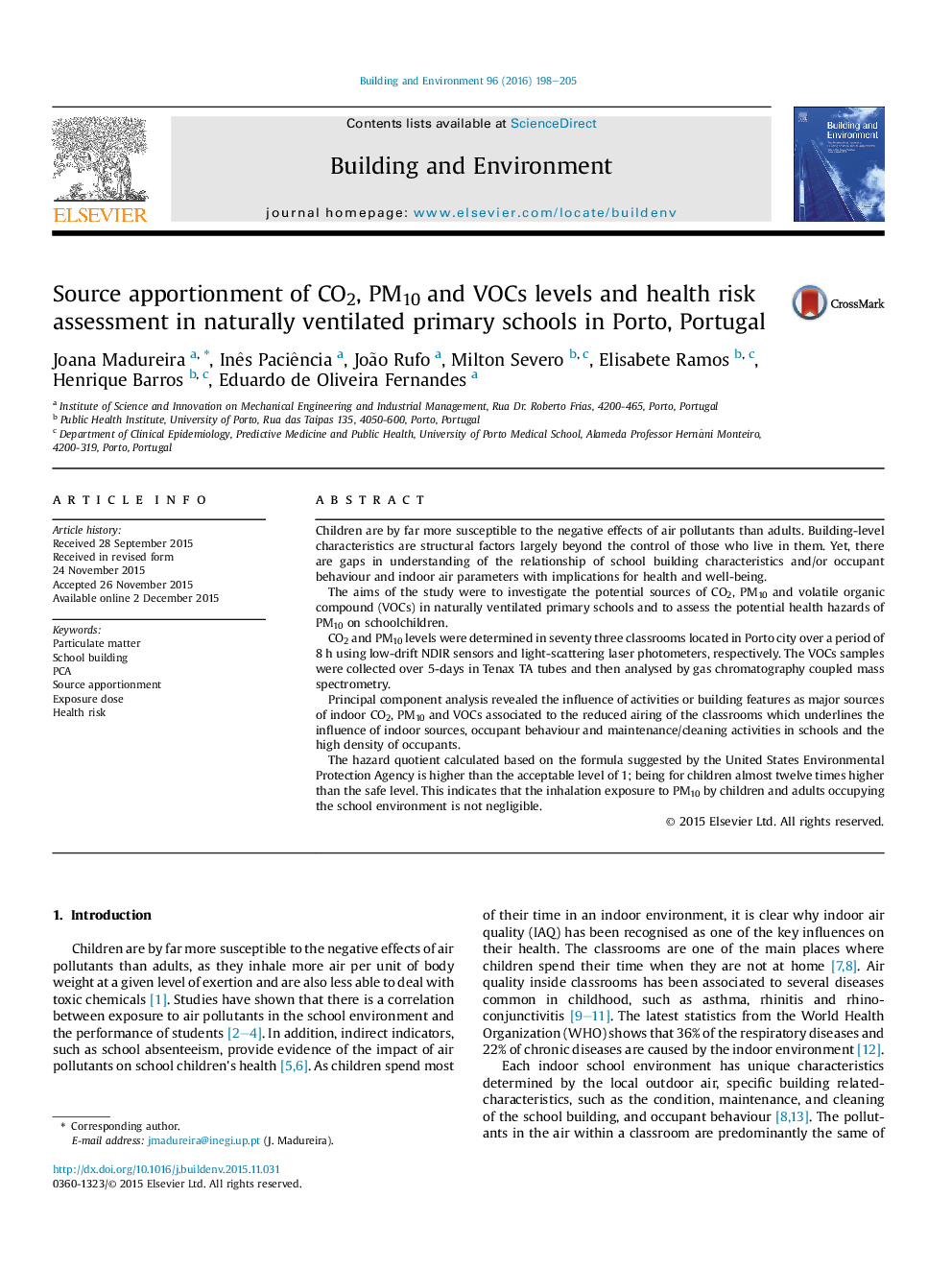| Article ID | Journal | Published Year | Pages | File Type |
|---|---|---|---|---|
| 247739 | Building and Environment | 2016 | 8 Pages |
•Potential sources of CO2, PM10 and VOCs was determined.•PCA revealed the influence of activities or building features as major sources of indoor pollution.•Children exhibited dose rates twice higher than adults.•The PM10 hazard quotient is higher than the acceptable level of 1.•Inhalation exposure to PM10 by children and adults is not negligible.
Children are by far more susceptible to the negative effects of air pollutants than adults. Building-level characteristics are structural factors largely beyond the control of those who live in them. Yet, there are gaps in understanding of the relationship of school building characteristics and/or occupant behaviour and indoor air parameters with implications for health and well-being.The aims of the study were to investigate the potential sources of CO2, PM10 and volatile organic compound (VOCs) in naturally ventilated primary schools and to assess the potential health hazards of PM10 on schoolchildren.CO2 and PM10 levels were determined in seventy three classrooms located in Porto city over a period of 8 h using low-drift NDIR sensors and light-scattering laser photometers, respectively. The VOCs samples were collected over 5-days in Tenax TA tubes and then analysed by gas chromatography coupled mass spectrometry.Principal component analysis revealed the influence of activities or building features as major sources of indoor CO2, PM10 and VOCs associated to the reduced airing of the classrooms which underlines the influence of indoor sources, occupant behaviour and maintenance/cleaning activities in schools and the high density of occupants.The hazard quotient calculated based on the formula suggested by the United States Environmental Protection Agency is higher than the acceptable level of 1; being for children almost twelve times higher than the safe level. This indicates that the inhalation exposure to PM10 by children and adults occupying the school environment is not negligible.
